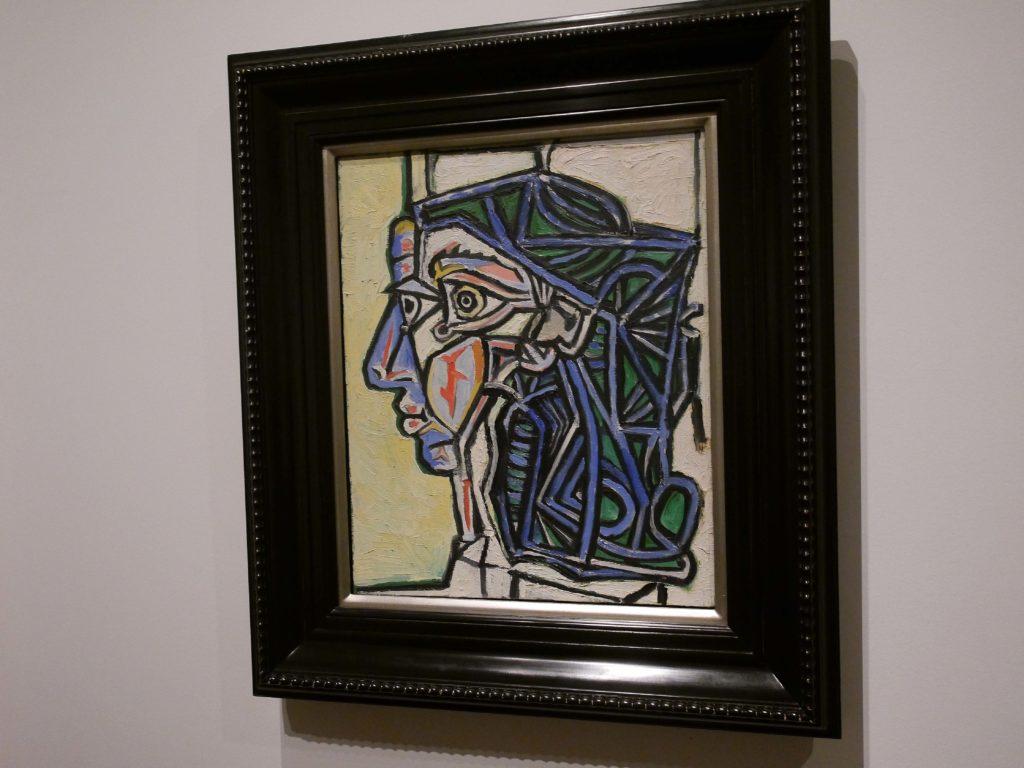By Juan A. Ramirez, Staff Writer
A new exhibition at the Museum of Fine Arts, Visiting Masterpieces: Pairing Picasso (MFA), affords visitors a look at how the 20th-century master revisited the same subjects that fascinated him throughout his career.
The exhibition includes four paintings on loan from Switzerland’s Beyeler Foundation, previously unseen anywhere in New England; three pieces from private collectors; and four from the museum’s collection. The works, as the title suggests, are paired together – four couples and a trio – in an attempt to highlight Picasso’s diversity of style and form.
Katie Hanson, assistant curator of paintings in the museum’s Art of Europe wing, said that the MFA had not devoted an exhibition to the Spanish artist’s work since 1997. She said given that it has been nearly two decades, it was time for Picasso to be featured in the MFA’s installment of their Visiting Masterpieces series, a program which aims to bring loaned works from acclaimed artists to the museum.
“Even working on a small scale, this exhibition can be a real draw to visitors who feel familiar with Picasso but might come and learn something more,” Hanson said. “Our exhibition is different than all of the Picasso exhibitions that have been happening as of late […] by taking a focused look at his creative process across the chronology of his life.”
The human body and its many forms take center stage in Pairing Picasso. In one pairing, a charcoal sketch of a sleeping woman arranged with two oil paintings of the same woman’s face showcases Picasso’s fixations and the ways he presents them. The loosely outlined sketch makes for a dreamy study of an artist’s obsession with his lover while the paintings put her directly in the spotlight, in both a colorful portrait and a surreal rescue scene, with grainy scratches and dynamic action. The woman’s face, a flowing collection of curves, is the common denominator, yet seeing these vastly different works together provides us a glimpse at how a single theme can dominate an artist’s vision.
“Part of what influenced me when putting this show together was seeing photographs of his studio where you’d see stacks of canvases – all paintings of the same woman in an armchair – and there would be 12 or 15 paintings together,” Hanson said. “Whatever he was into at the moment he did again and again, finding a new focus each time.”
The exhibit curators deliberately keep placards away from the works. Visitors view the artwork and make their own connections before referencing each piece’s curator notes and quotes from the artist.
“He was not into theory; he referred to theory as blinding,” Hanson said. “I think his rejection of theory can be felt by looking at his work – the feeling that you’re coming to them without needing to have a whole theoretical background behind you in order to appreciate it.”
One of the successes of the exhibition is its ability to serve as an introduction to Picasso, museum visitor and former art teacher from Duxbury Candace Gabbard said.
“This would explain Picasso very well for people who might not know much of him,” Gabbard said. “The positioning of these powerful pieces really shows his versatility. The small number of pieces works well, too. I feel like having more works would have been a disservice to the ones on display and would’ve been too overwhelming.”
Another visitor, Diane Avery, does not consider herself a sophisticated art connoisseur, but spoke of the exhibition’s impact on her understanding of the artist.
“It was like having an ‘A-ha!’ moment,” Avery said. “Seeing these works side by side revealed a sort of clarity about Picasso. [The exhibition] is brilliant in how it captures change over time and shows these subjects as unfinished stories.”
A featured quote from Picasso explains that he saw his individual works as “different states of a single painting” and that it was up to the viewer to discover every form possible.
“He said that a work of art lives only through the one who is looking at it,” Hanson said. “I think there’s a certain freedom in that.”
Visiting Masterpieces: Pairing Picasso is on display at the MFA until June 26.
Photo by Robert Smith









